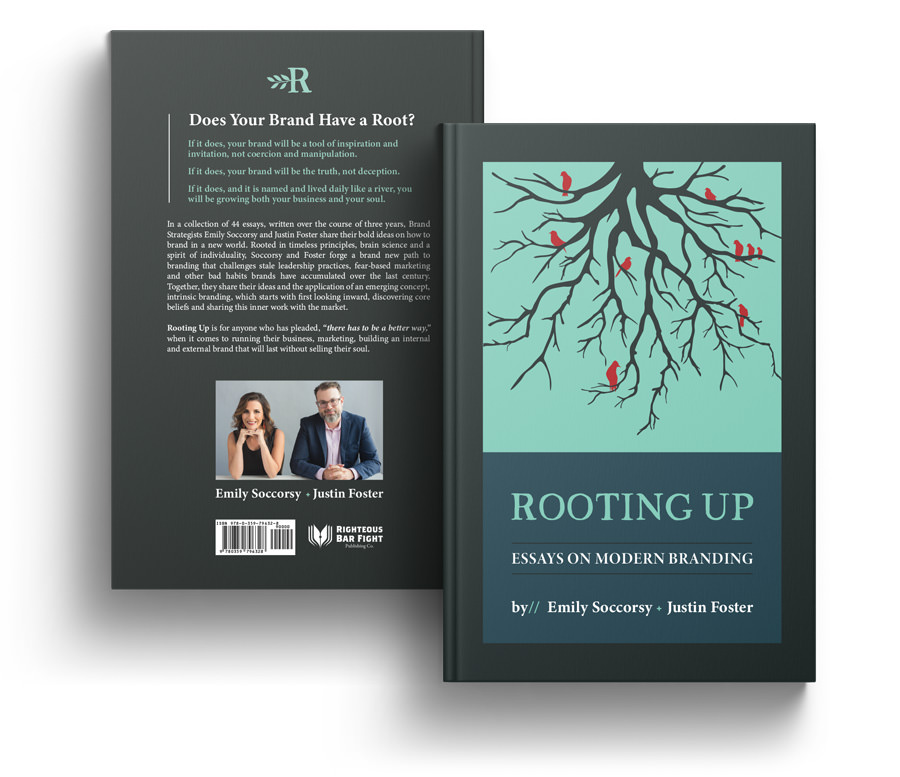Filed Under: 21st Century Branding, Intrinsic Branding, Marketing
Originally shared on Emily’s LinkedIn
As tribal beings we will always be inclined to belong.
It’s a natural and hard-wired tendency that our forebears relied upon for survival.
It came to be when tribes were small, when it was essential the tribe saw the value you brought to the collective, understood it, and honored it.
Today, our tribes are immense. The sheer size and ability of humanity, and the systems of support we have created, allow for looser bonds with one another, for more space between us. We have been moving, increasingly, toward isolating ourselves, toward becoming tribes of one or two.
But these trends do not dampen or erase our innate need to belong to larger groups or movements.
We still want to belong, to be accepted, to be a part of something meaningful and significant beyond ourselves.
It is the neglect of this deep human need that has drawn many people to connect with wild conspiracies and ideas that have little rooting in fact. We want to belong.
The tendency to seek and gain the acceptance of large groups is typically present in some measure with the business owners we work with on branding. Although most of our clients find us after they have had a major realization: they have begun to surrender the idea that their business and brand must appeal to as many people as possible.
Instead, they are realizing that they are not for everyone.
Instead, they are seeking a particular type of individual as their client, one who treats them with respect, values their expertise, and who is energy-positive (and thus income-positive) to their business.
As we teach over and over, branding is much more about repelling the people who are not a fit for your organization as quickly and efficiently as possible so that high maintenance, unpleasant or ill-fitting clients do not become a drain of your time, resources and energy.
This is why clients are ready for the practice of intrinsic branding, which organizes their brand around who they are inherently and builds language and marketing around that truth.
Once that is accomplished, the brand itself acts as a bat signal for those people they do want to belong to and with. And it repels those who are not bought in.
Usually, while business owners may spend some time thinking about how they want to appear in the world, it typically takes running into a concrete wall before they begin to consider who they want to work with.
I do not refer to demographics or industry niches here. What I refer to is: what are the qualities of the human beings you want to focus your time, effort and energy on serving? How do they behave? What are their everyday traits? What do you love most about them? What personality features make them energy positive for you?
These are the people you are resting the foundation of your business upon so it makes sense to know them deeply.
It’s a question of great significance in a business, and one that requires contemplation and consideration, a bit of inquiry (internal and external) to answer. That’s probably why business owners who are in a hurry won’t believe they can do it. But it’s the old “stitch in time” idea they should be referencing. Once you can answer these questions about your audience as a business owner or director of marketing, you are poised for simplicity and ease in marketing and business growth.
We can all benefit by asking ourselves whom we want to belong with, where we want to belong and what are the conditions for gaining that comforting sense of belonging.
This is true not just in business, but in life.
If we do not understand where and with whom we want to belong, we are likely to fall prey to trying to belong nearly anywhere.
In business, this can cause us to try to please all of the people, which is the most common and detrimental fool’s errand in branding and marketing. Brands are built on clarity of intent (and audience) and they are grown by a consistent message that expresses that. See Nike. See Southwest. See Ben & Jerry’s.
Trying to belong anywhere can cause dilution of your brand, a lack of clarity in the mind of your audience, and boredom. This ultimately leads to a dwindling of customers and revenue.
But beyond all of that, being deeply in tune with your own sense of belonging, and knowing the sort of community you are best and most able to serve gives you a major differentiator.
It allows you to tap into the parts of branding and marketing that are ever-present and ever-relevant, the hearts and souls of the humans in your audience.
We invite you to join Being Marketers. Being Marketers gives you a time and space to harmonize your marketing work with your soul.
Our customized newsletter content is crafted with your role as a marketing leader in mind and is designed to provoke reflection, inquiry and creativity. Join today.
